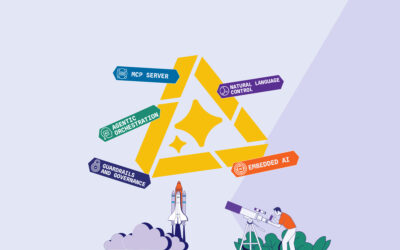A SaaS platform can help insurers reduce the internal resources needed to maintain a core software platform while preserving the security and availability critical to today’s insurance environment
It’s a challenge to remain competitive in today’s hard insurance market. To do so, insurance companies need to keep policyholders happy while improving efficiencies and lowering costs. It’s a lot easier said than done.
At EIS, we believe SaaS for insurance is the key to meeting policyholder and insurer needs simultaneously.
What is SaaS for insurance?
SaaS, or Software-as-a-Service, is a software licensing and delivery model that offers the benefits of a single software interface for all your core systems without requiring continuous upkeep by your IT department. Customers get to enjoy the benefits of owning software without the pain of managing and maintaining it. Most notably, SaaS empowers insurers to digitally transform faster while focusing manpower more on core business functions rather than IT maintenance.
SaaS benefits policyholders and insurance companies alike
The coronavirus pandemic accelerated the need to fully and reliably digitize core functions for many insurers, demanding next-level features that current systems can no longer support or inspiring the need for rapidly virtualizing their ecosystem to engage customers and employees alike. SaaS environments, already virtualized by nature, provide a synergistic fit for this new paradigm.
Software-as-a-Service can:
- Reduce IT spend and control operational risk. Outsourcing the costs and maintenance of core systems infrastructure, security, certifications, and compliance to SaaS can reduce the burden on your internal IT team, allowing you to reallocate resources to focus on your core business again. Unexpected costs like system downtime, hardware upgrades, and disaster recovery are avoidable with a reliable SaaS provider. For this reason, employing a SaaS moves core software from a depreciating asset to a fixed operational expense. Finally, the total cost of ownership for SaaS core systems is even lower than cloud hosting.
- Manage IT costs & risks. Costly security certifications, data encryption, monitoring, intrusion detection, and remediation of cyber threats are offloaded to the SaaS provider. Simply put, the SaaS provider secures everything so you don’t have to. A white-glove SaaS will offer a security layer on top of the cloud provider to secure your cloud-hosted assets and processing.
- Fast track speed-to-market. Fully managed software with comprehensive configuration and integrated automation to push to production helps you get to market faster.
A smarter way to do business
The journey to digital transformation will be different for every insurer. Each insurance company will carry a different set of data integration standards, personalization requests and have unique security and compliance challenges. Understanding what each SaaS provider offers will be key to recognizing their differentiators.
EIS takes an enhanced approach to SaaS:
1. Single-tenant. Customers typically inquire about the tenancy model thinking that multi-tenancy will better serve their needs. The actual impact of the tenancy model is greater for the SaaS provider than the client; typically manifesting in the cost of running and maintaining the solution. The net result is that either the provider’s solution becomes pricey (in which case the customer can decline to purchase), or the provider’s margins are razor-thin (making it less profitable to run). Given the choice, most insurers would prefer single-tenant SaaS at the right price point for its guarantees of separation from other hosted customer’s environments and the flexibility it provides.
EIS is able to deliver SaaS in a single-tenant environment while maintaining the benefits of a multi-tenant offering by leveraging our CI/CD pipeline automation and Infrastructure-as-Code. This provides the insurer with the flexibility to tailor the platform to their needs while keeping intellectual property siloed away from other customers and securing policyholder data.
2. Single platform for SaaS and owned deployments. EIS continues to support customers who decide to own their infrastructure and deployments with the same core insurance suite that is utilized in our SaaS offering. This gives insurers the flexibility to switch delivery models from SaaS to owned infrastructure and vice versa. Insurers can start in SaaS and, as they grow, migrate to an owned deployment if they so choose. The single platform also gives insurers the comfort of not having to choose between multiple competing offerings from their vendor, and that they would not be caught stuck on a deprecated platform.
3. Engineering and service excellence. A single platform serving as the basis of EIS SuiteⓇ in any deployment model allows for constant updates and improvements across deployment models. This means customers get the benefit of new features and architectural advancements without spending time on upgrade cycles. EIS’ commitment to SaaS ensures that our tooling, core architecture, and processes continue to evolve to meet the flexibility, availability, extensibility, and security needs of our customers.
Data-driven results are within reach
The insurance business is data-driven, and today there’s more data than ever. To meet policyholder demands, back-of-house business needs, and more, outsourcing your software, design, implementation, and maintenance to a SaaS provider can help increase profitability and reduce the resources it takes to maintain and safeguard existing policyholder data.




